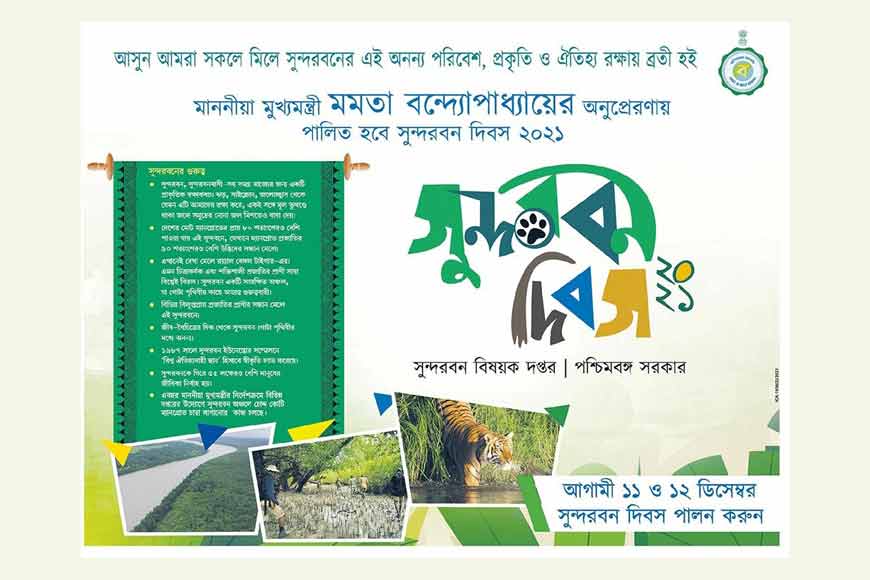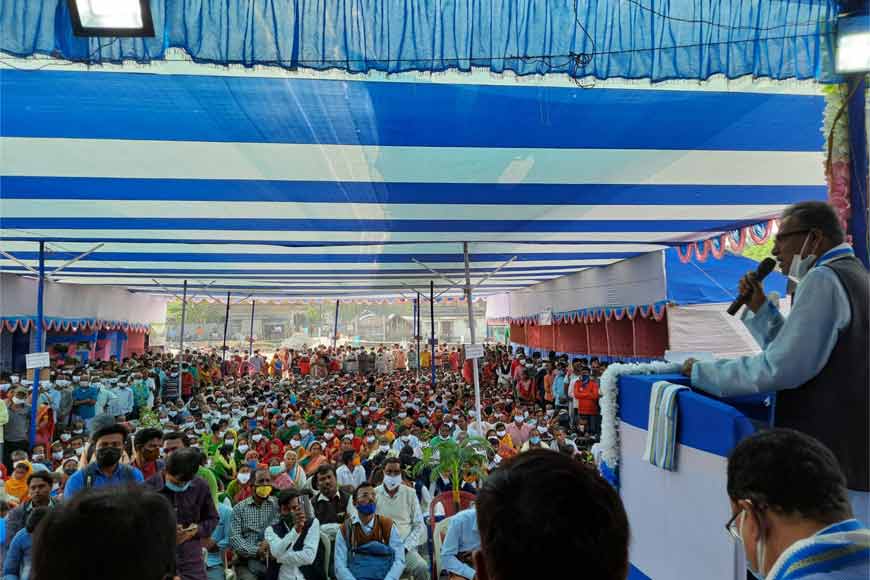Sundarban Dibas highlights the critical need for mangrove conservation

The first ‘Sundarban Dibas’ (Sundarban Day) was conceptualised in 2002 and scheduled for August, but the date was later shifted to December 11 and 12 to coincide with the dates when the United Nations Educational Scientific and Cultural Organisation (UNESCO) declared most of the Indian Sundarbans as a World Heritage Site in 1987.
The principal aim of the event is to dedicate two days to the people of the region and to celebrate their survival amidst immense hardships and natural calamities, carrying on living despite all odds. A further aim is to spread awareness about nature conservation, especially of the fragile mangrove forests, and generate alternative livelihoods in harmony with conservation efforts with the aid of government programmes.
The Sundarbans are spread across a unique deltaic region which has gradually expanded from Malda southward into the current Gangetic plain. Centuries ago, Calcutta was part of the Sundarbans too, and tigers freely roamed across some of the busiest parts of the city today.
 Department of Sundarban Affairs Minister Bankim Hazra addresses the gathering
Department of Sundarban Affairs Minister Bankim Hazra addresses the gathering
As the citation page in the UNESCO World Heritage section says: “The islands are also of great economic importance as a storm barrier, shore stabiliser, nutrient and sediment trap, a source of timber and natural resources, and support a wide variety of aquatic, benthic and terrestrial organisms. They are an excellent example of the ecological processes of monsoon rain flooding, delta formation, tidal influence and plant colonisation. Covering 133,010 ha, the area is estimated to comprise about 55% forest land and 45% wetlands in the form of tidal rivers, creeks, canals and vast estuarine mouths of the river. About 66% of the entire mangrove forest area is estimated to occur in Bangladesh, with the remaining 34% in India.”
This one paragraph more or less sums up how critical it is that the Sundarbans be protected and conserved. As a senior Forest Department official adds, “These are the world’s largest existing mangroves, and very fragile. If this ecosystem is not maintained, not only do we lose numerous animal and plant species, but we risk the flooding and destruction of mainland Bengal owing to storms and rain.”
Sundarban Dibas is thus an attempt to make people of the region more aware of climate change and threats to mangrove conservation, as well as teach them community disaster management techniques in the event of devastating natural disasters such as Cyclone Amphan in 2020.

Sundarbans residents are being encouraged to plant mangroves alongside the government, for which mangrove saplings are being distributed. This year, the two-day event was divided between Rudranagar village in Sagar block of South 24 Parganas, and Jogeshganj in Hingalganj block of North 24 Parganas. Speeches were made by dignitaries thanking the people and laying out future plans and programmes by the government, and expert environmentalists like Prof. Jayanta Basu spoke about climate change and solutions to combat it.
Saplings were handed out to young women covered by the government’s Kanyasree scheme, and a walk was held to cover the area where the event was organised. There were also cultural activities, quiz competitions, and other interactive events. Display stalls were set up to showcase government work done in the Sundarbans, and spread knowledge about conservation efforts.











